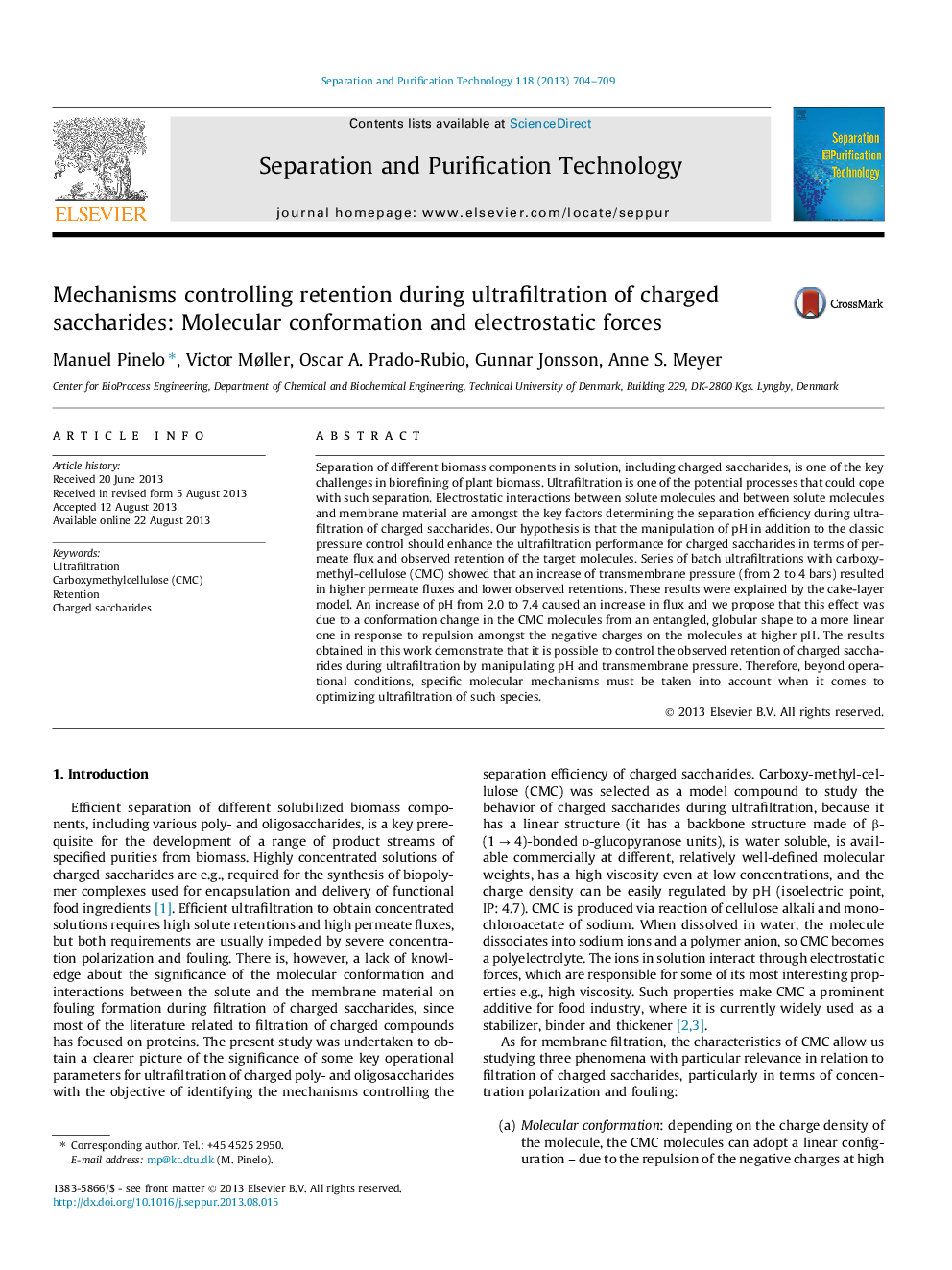| Article ID | Journal | Published Year | Pages | File Type |
|---|---|---|---|---|
| 641557 | Separation and Purification Technology | 2013 | 6 Pages |
Abstract
Separation of different biomass components in solution, including charged saccharides, is one of the key challenges in biorefining of plant biomass. Ultrafiltration is one of the potential processes that could cope with such separation. Electrostatic interactions between solute molecules and between solute molecules and membrane material are amongst the key factors determining the separation efficiency during ultrafiltration of charged saccharides. Our hypothesis is that the manipulation of pH in addition to the classic pressure control should enhance the ultrafiltration performance for charged saccharides in terms of permeate flux and observed retention of the target molecules. Series of batch ultrafiltrations with carboxy-methyl-cellulose (CMC) showed that an increase of transmembrane pressure (from 2 to 4Â bars) resulted in higher permeate fluxes and lower observed retentions. These results were explained by the cake-layer model. An increase of pH from 2.0 to 7.4 caused an increase in flux and we propose that this effect was due to a conformation change in the CMC molecules from an entangled, globular shape to a more linear one in response to repulsion amongst the negative charges on the molecules at higher pH. The results obtained in this work demonstrate that it is possible to control the observed retention of charged saccharides during ultrafiltration by manipulating pH and transmembrane pressure. Therefore, beyond operational conditions, specific molecular mechanisms must be taken into account when it comes to optimizing ultrafiltration of such species.
Related Topics
Physical Sciences and Engineering
Chemical Engineering
Filtration and Separation
Authors
Manuel Pinelo, Victor Møller, Oscar A. Prado-Rubio, Gunnar Jonsson, Anne S. Meyer,
